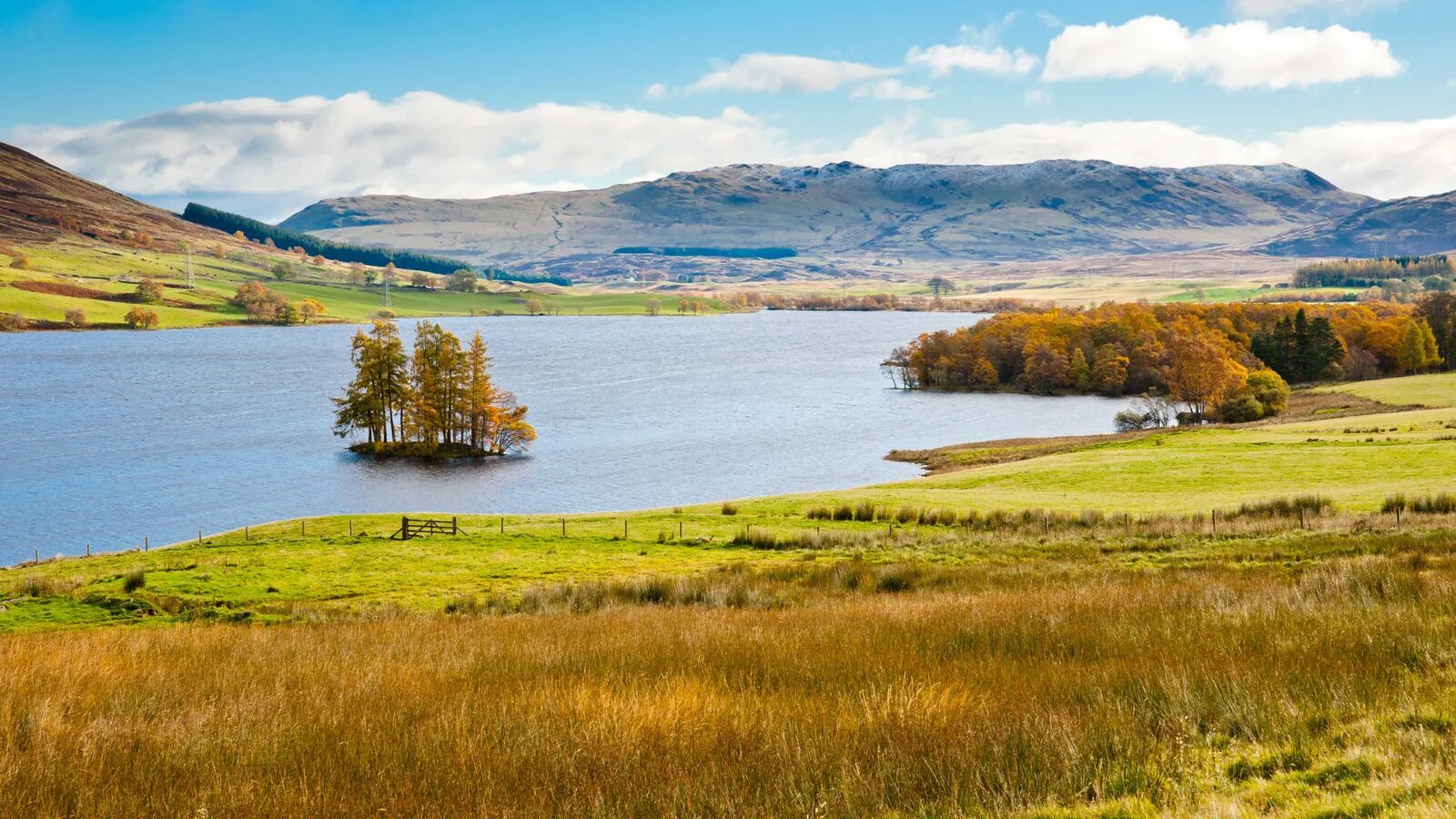
The piece of land poking out of the Hebridean loch is an example of a remarkable form of a man-made island known as a crannog, which were created in multitudes via an inspiring blend of ingenuity and effort. Nearly 600 of these artificial islands have so far been recorded across mainland Scotland and its islands, built big enough to support large communal roundhouses or clusters of smaller dwellings, and linked by slender causeways or piers to the shorelines of myriad lochs in often stunning locations of wild beauty.
While the reason for building crannogs remains a subject of debate, no one doubts the ancient engineering energy they embody. "These crannogs represent a monumental effort made thousands of years ago to build mini-islands by piling up many tons of rocks on the loch bed," said Professor Fraser Sturt, an archaeologist at the University of Southampton, who studies crannogs in collaboration with Dr Duncan Garrow at the University of Reading.
The word crannog translates from Gaelic as "son of tree" or "young tree", referring to the fact that their foundations were built by driving long timber piles into the bed of a loch before filling in the interior with stones or other natural materials to create a solid foundation. People dwelled on these distinctive platforms for thousands of years - in some places, right up to the 17th Century.
Just gathering the rocks to form the solid in-fill for the new islets would have involved extensive scouring and gathering of material, then the deployment of flotillas of boats to ferry the material from the shore - a hard enough task even without factoring in the vagaries of the Scottish weather.
To put the work involved into perspective, when archaeologists set out to reconstruct one of the many crannogs discovered on Loch Tay in Perthshire in the 1990s - using modern tools to gather and cut the timber - construction time spanned three years. Challenges included working out how to drive 7m- to 9m-long timber piles made from local alder trees into the loch bed through several metres of water by hand. The modern-day reconstructors turned to complex wooden scaffolding from which each timber pile could be twisted back and forth until it pierced 2m into the loch bed. To build just one crannog - which became the Scottish Crannog Centre - required 168 timber piles.
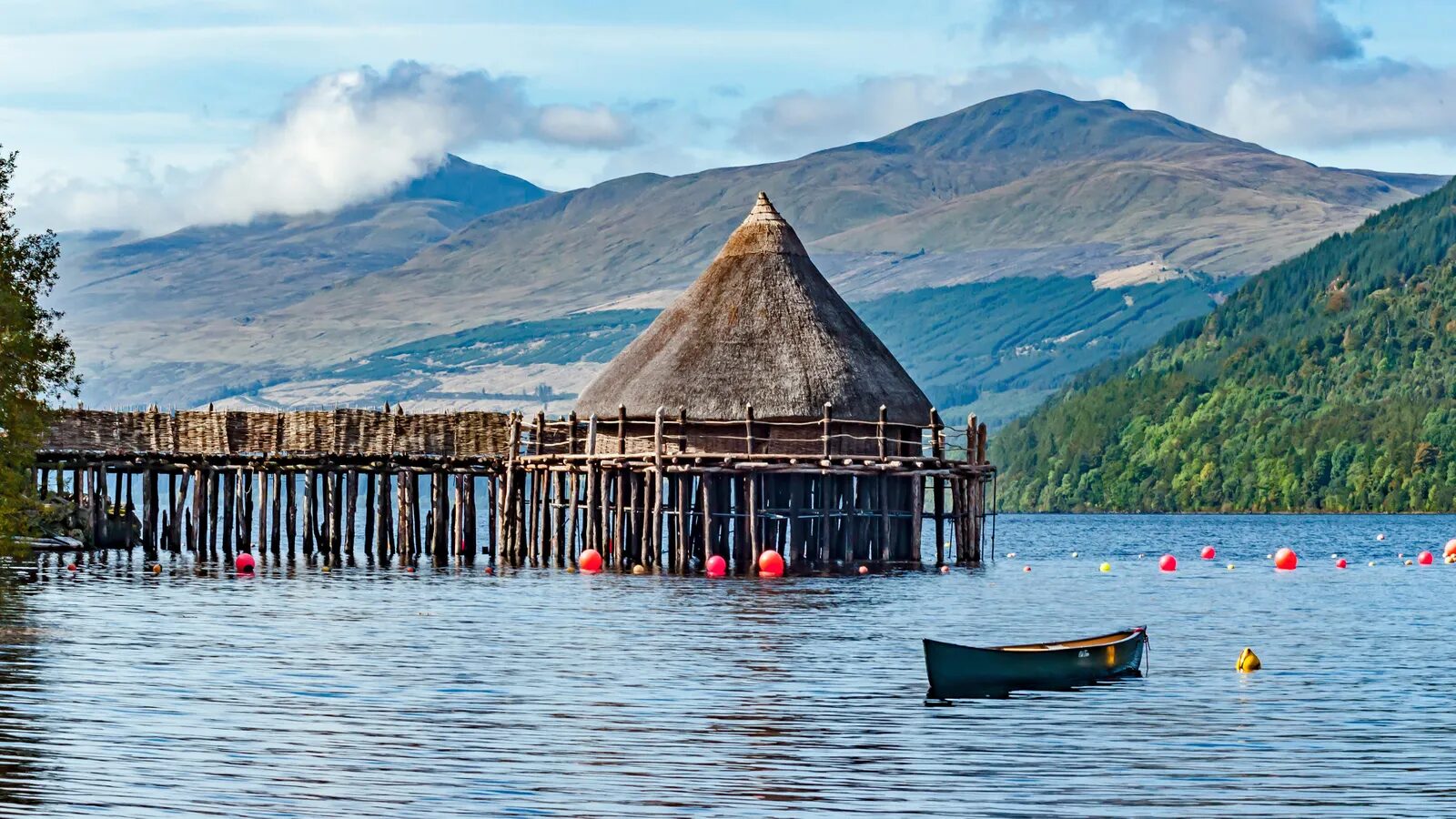
"We know that crannogs were dwellings, people lived on these islets. But for what reason remains stubbornly unclear," said underwater archaeologist Barrie Andrian, who - along with her partner Dr Nick Dixon - has been a pathfinder in crannog research since the 1980s. "Crannogs may have been the high-status dwellings of local leaders. Perhaps they were trading posts located on waterways people used to move through the landscape. Or perhaps living on water held some spiritual or cosmological significance."
Garrow has some further suggestions. "Their uses may well have changed regionally or through time. Some would have been built as special-purpose ritual sites, but others may have been constructed in a loch for defensive reasons. I think that, overall, they were used for many different purposes, even within the same period."
What is certain, though, is that crannogs provide a unique window on human life all the way back to Neolithic times in Britain, an era also sometimes called the New Stone Age. That is because the silt-carpeted floors and still, icy waters of Scottish lochs preserve much that would be lost elsewhere. Pristine pottery, such as that found by Murray in the Hebrides, is often found in superb condition, having lain undisturbed for millennia, cradled by the soft silt of tide-free lochs.
"The underwater environment of crannogs slows decay processes," said Andrian. "The preservation is so good that wooden tools are perfectly preserved. And it is not just artefacts. The great preservation of waterlogged materials include macro plant and pollen remains that give us details about diet, the environment and lifestyle."
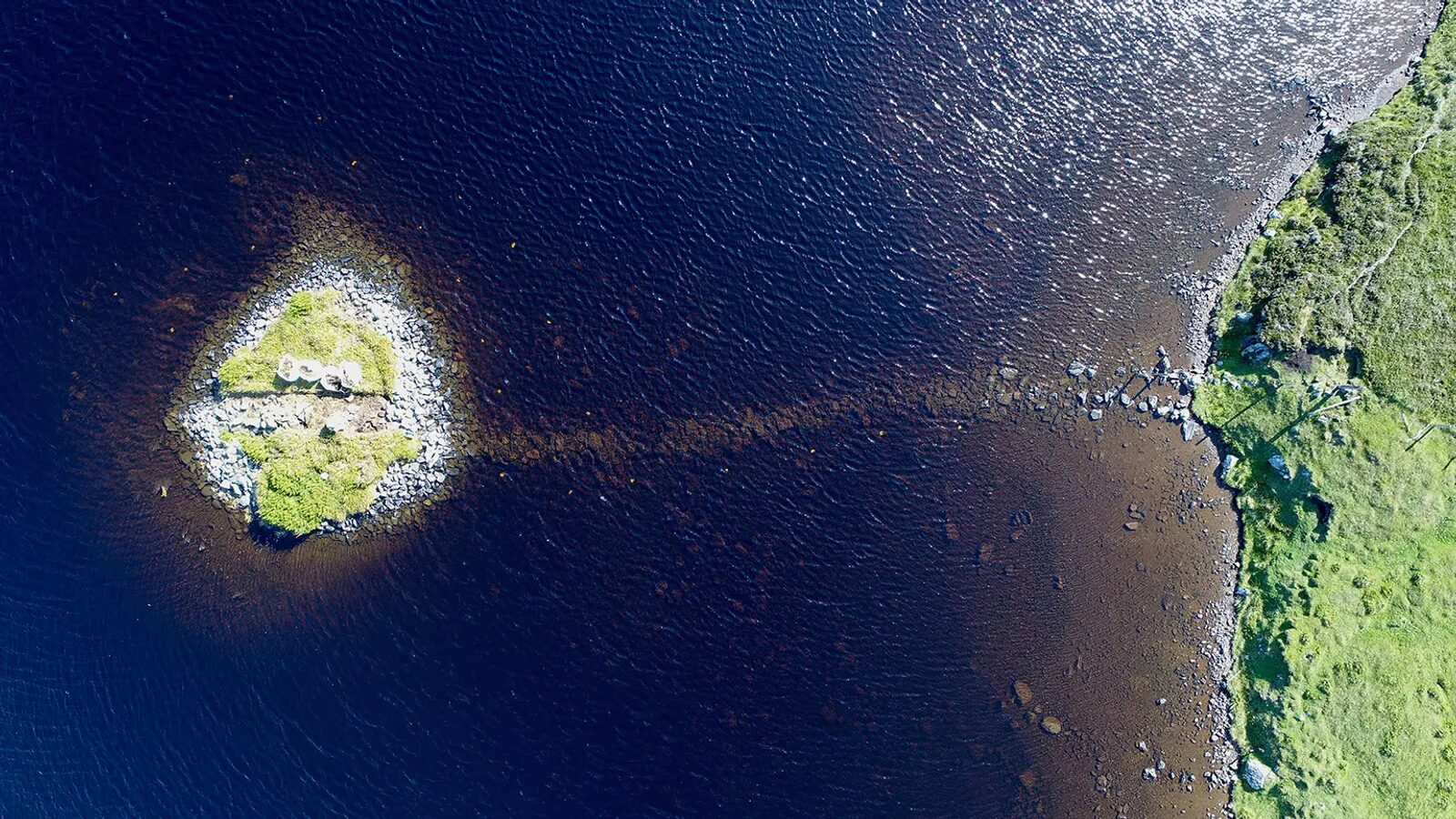
As a founder member of the Scottish Wetland Archaeology Programme, Anne Crone has been another key figure in crannog research, in the area of dendrochronology - the scientific study of ancient timbers - for which crannogs provide a wonderful case study.
"Crannogs are a dendrochronologists' delight because wood is so lavishly used in their construction, and because the wood survives so well in the anaerobic conditions within the crannog," she said. "Dendrochronology is able to date the felling of timber to the calendar year, and consequently we can develop very precise chronologies for the construction and occupation of a crannog."
Explorations by Crone and others are discovering unique finds across Scotland. "We often find objects that we never find on dry land archaeological sites, like leather, wooden artefacts and textiles," she said. "There are fantastic finds, including assemblages from Loch Glashan in Argyll that are on display in Glasgow's Kelvingrove Museum, and finds from Buiston crannog in Ayrshire on display in the National Museum of Scotland in Edinburgh. These both include an array of wooden artefacts, as well as a leather book satchel at Loch Glashan."
As well as traditional hands-on searches - think dry-suited divers patiently sifting through silt in icy lochs - crannog studiers are drawing on modern technology, too. "Techniques we have applied include side-scan sonar, dual frequency single-beam echo-sounder [to determine water depth], underwater and aerial photogrammetry [to create 2D and 3D models], real-time kinematic GPS survey, palaeoenvironmental coring [to provide a cross-section of natural activity through time], terrestrial excavation and radiocarbon dating," said Garrow.
Following Murray's pottery discovery, Google Earth helped idenfity other potential Hebridean crannog sites, including Loch Arnish, Loch Langabhat and Loch Borgastail; while Andrian uses drone, planes and even kites with cameras attached to spot sites.
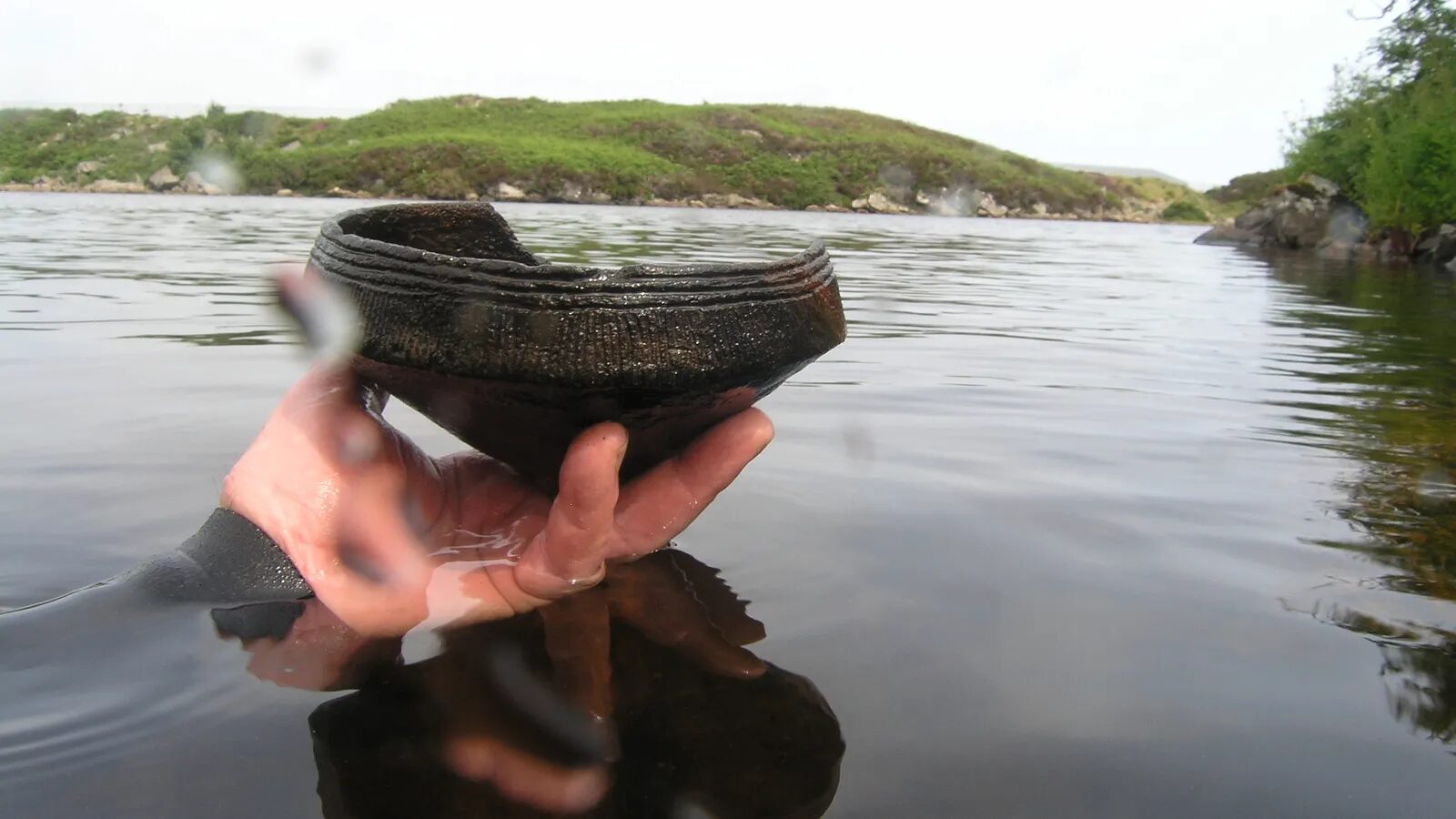
Although the crannog reconstruction was sadly destroyed by fire in June 2021, the intent is for a new £12 million Crannog Museum to be built at Dalerb on Loch Tay's north shore, near the spot where another of the loch's 18 known crannogs had once existed. "There were already plans to relocate to the other side of the loch - actually where we had hoped to excavate at some point in the future," said Andrian.
Working to rebuild the Scottish Crannog Centre is just part of an ongoing exploration of these remarkable ancient engineering marvels. "As Scotland has so many lochs waiting to be explored, there is a distinct possibility that more crannogs will be discovered," said Andrian.
She is echoed by Garrow, who plans to return this summer to one of his favourite locations at Loch Bhorgastail on the Isle of Lewis. "It's a beautiful location, and has enormous promise in terms of finds. I can't wait to get there and start digging," he said.
Murray, whose chance search so changed the timeline of crannogs and their place in Scottish history, is also still regularly plunging into tiny Hebridean lochs in search of nuggets of Neolithic remembrance. He described his 2020 discovery - a near-perfect 5,500-year-old drinking vessel - to the Scottish islands' publication The Northern Times: "It was only about 4ft down and I saw this tiny fragment sticking about a quarter of an inch out of the mud... I did take a sip of water from it, and to think the last person to hold this and put it to their lips was thousands of years ago was just incredible. To think it is older than Stonehenge, Callanish and the pyramids is just fantastic."
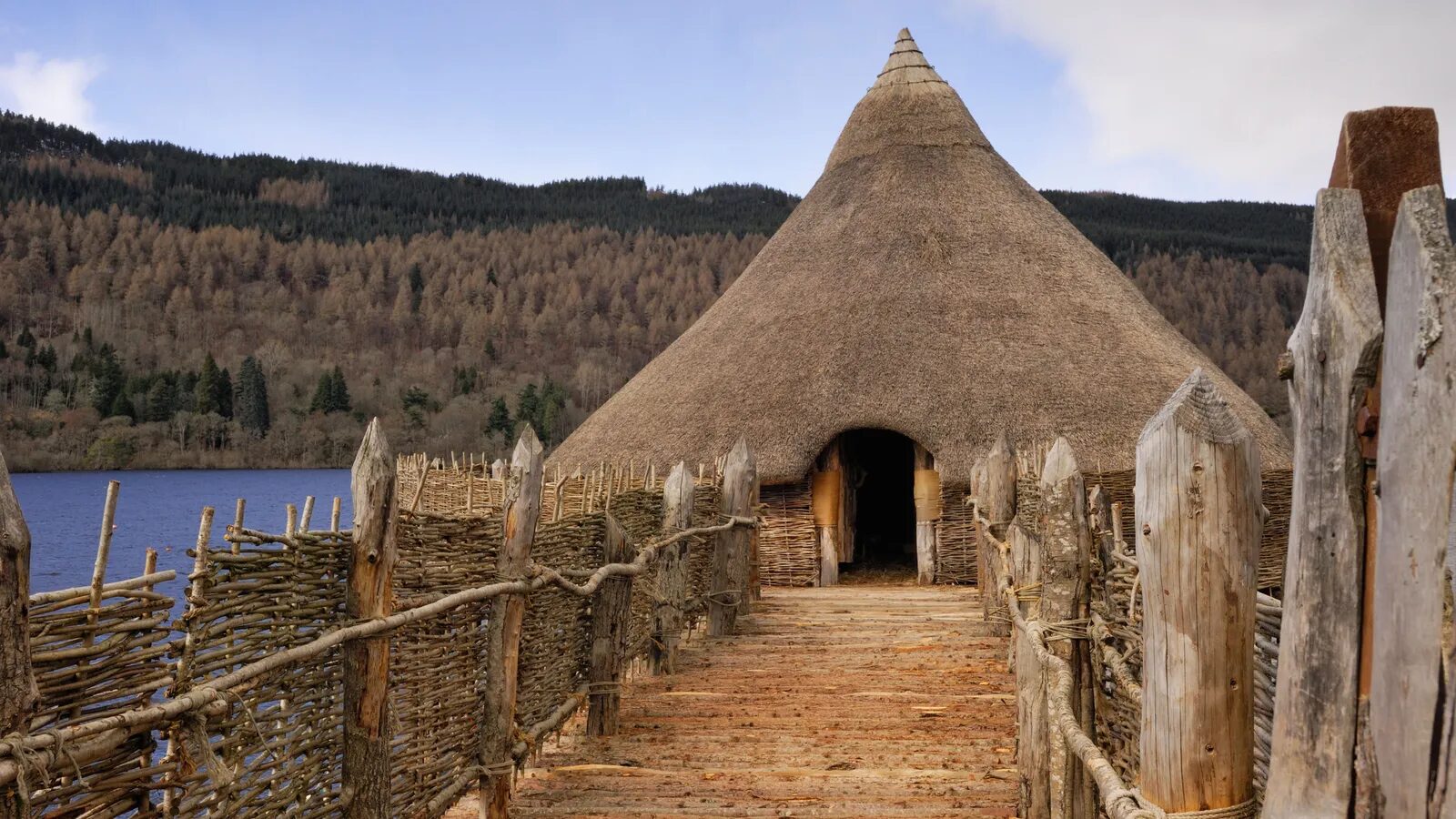
More ancient island dwellings
Early academic interest in ancient water dwellings was sparked around 1850 by the discovery of submerged Alpine structures that appeared when Swiss lakes were being drained for agricultural and water supply purposes. Unlike crannogs, however, these are now believed to have sat on what had been the lake shoreline in distant history, rather than being built out on the water.
Hundreds of crannog-like islands also dot the lakes (loughs) of Ireland, but though some of these also date to before Christ, evidence suggests they were used for just for a few centuries - in contrast to the millennia of crannog occupation in Scotland.



Comment: For more on Crannogs: Crannogs: Neolithic artificial islands in Scotland stump archeologists
Further clues may be found in the construction at England's Must Farm: "Catastrophic" fire destroyed incredible British Bronze Age settlement a year after it was built
See also:
- The Seven Destructive Earth Passes of Comet Venus
- Brochs: Scotland's enigmatic Iron Age circular stone structures
- Bronze Age Britons were riddled with parasites but had the finest of fabrics
- Did unknown strain of plague discovered in 5000 year old tomb wipe out Europe's stone age civilization?
- Mysterious flooding leads to discovery of 5,000-year-old underground city in Turkey's Cappadocia
- Scotland: Mystery of stones dated to 500BC melted by heat that would need to be as strong as a laser
Also check out SOTT radio's: